
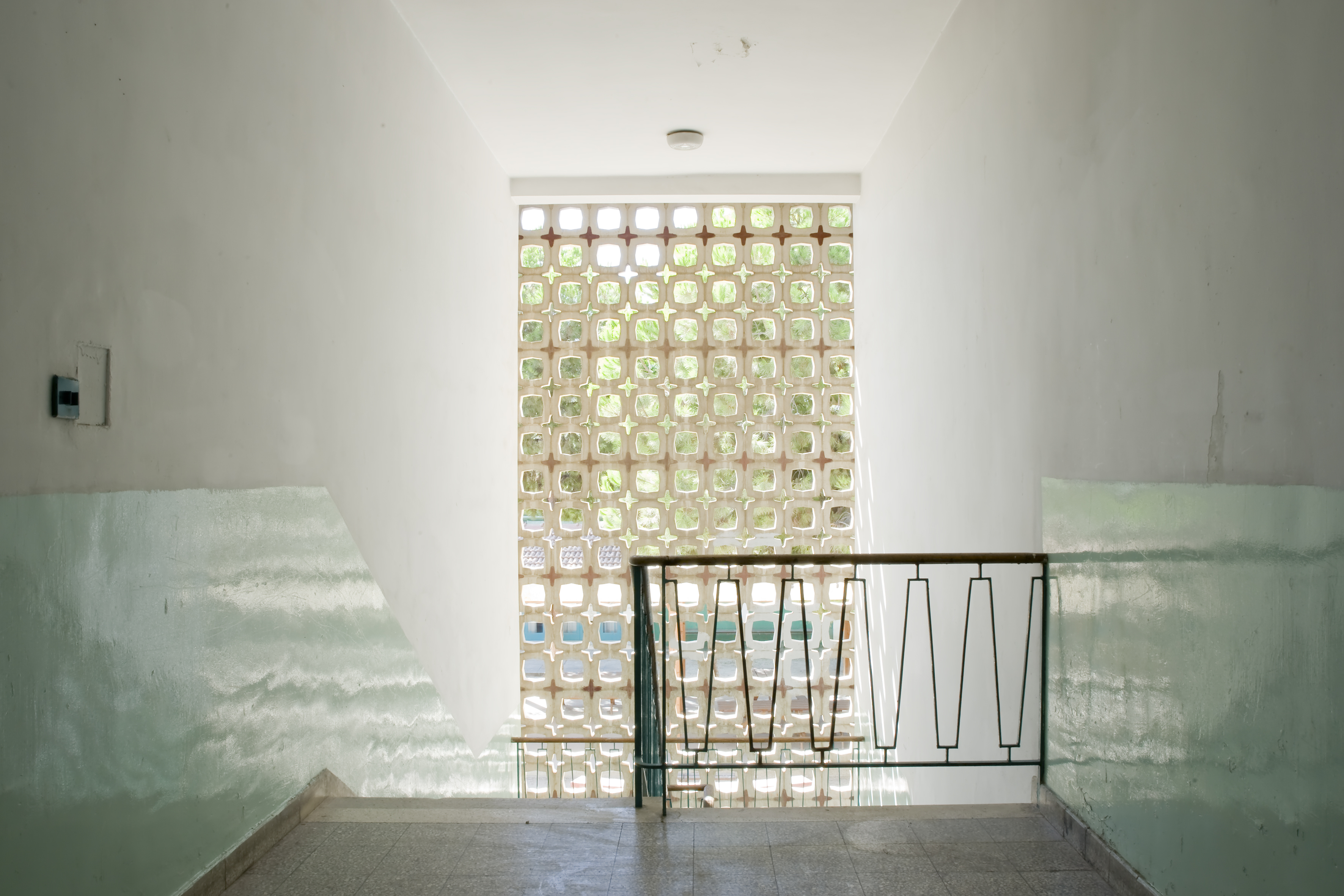
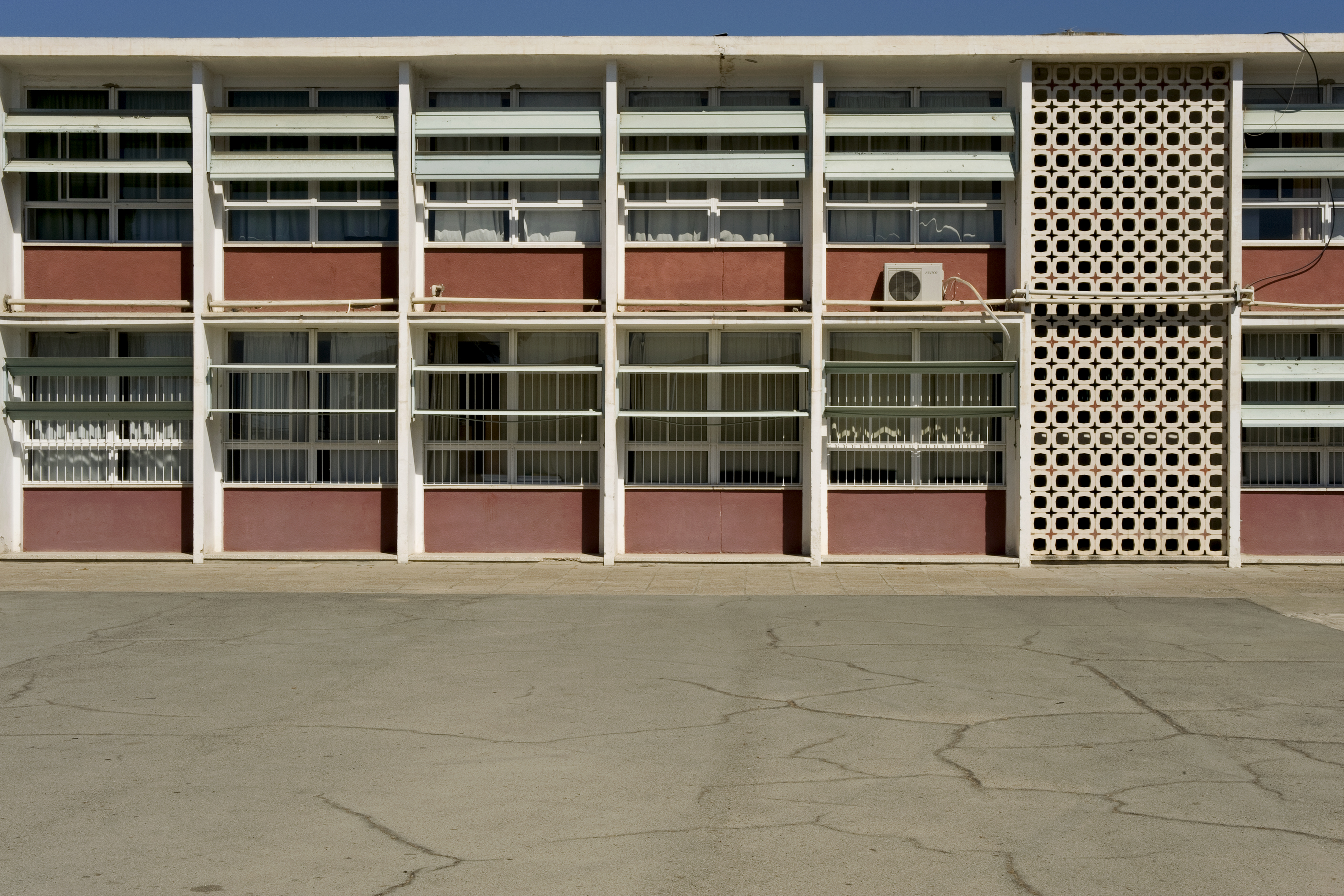


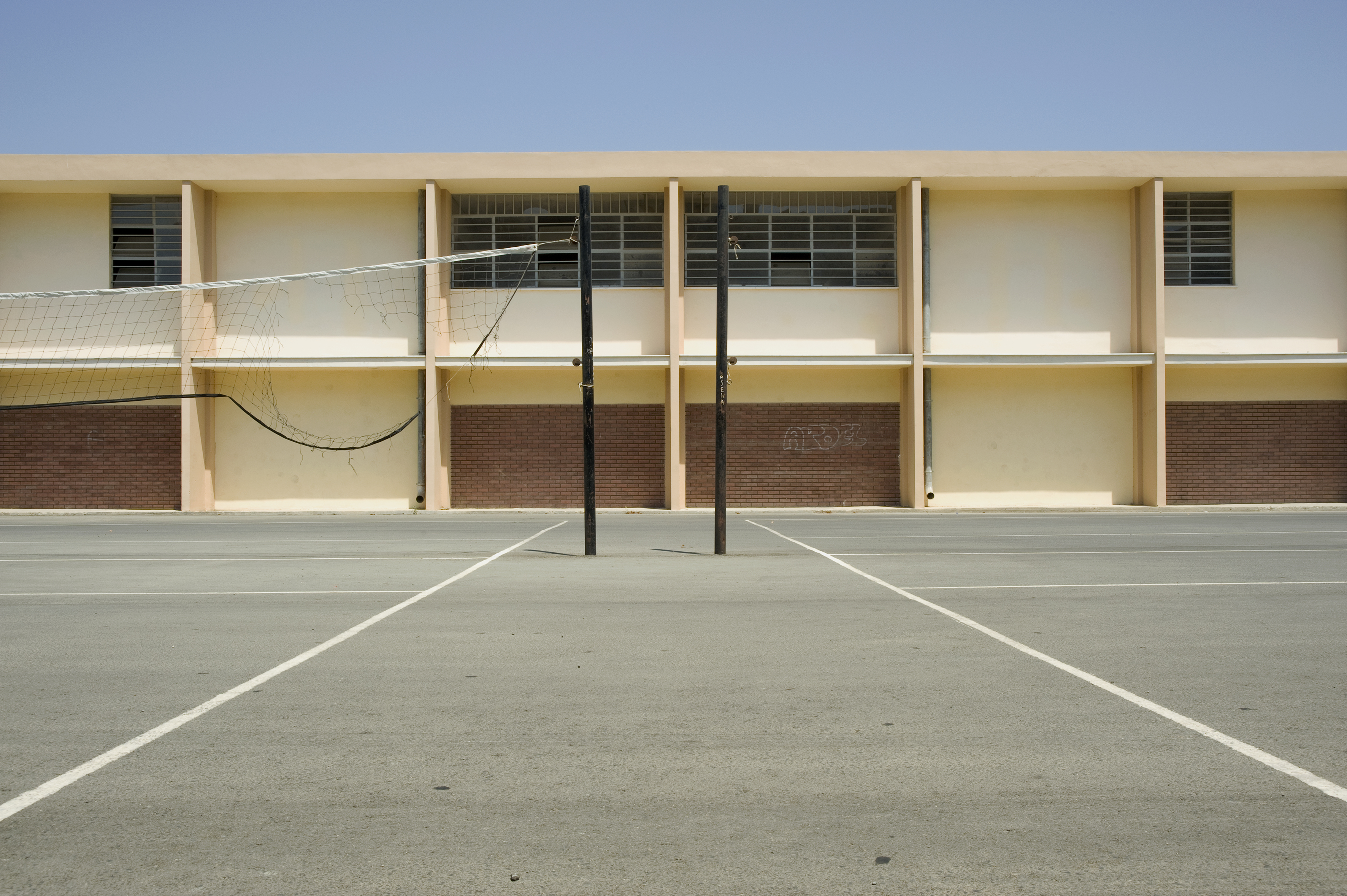

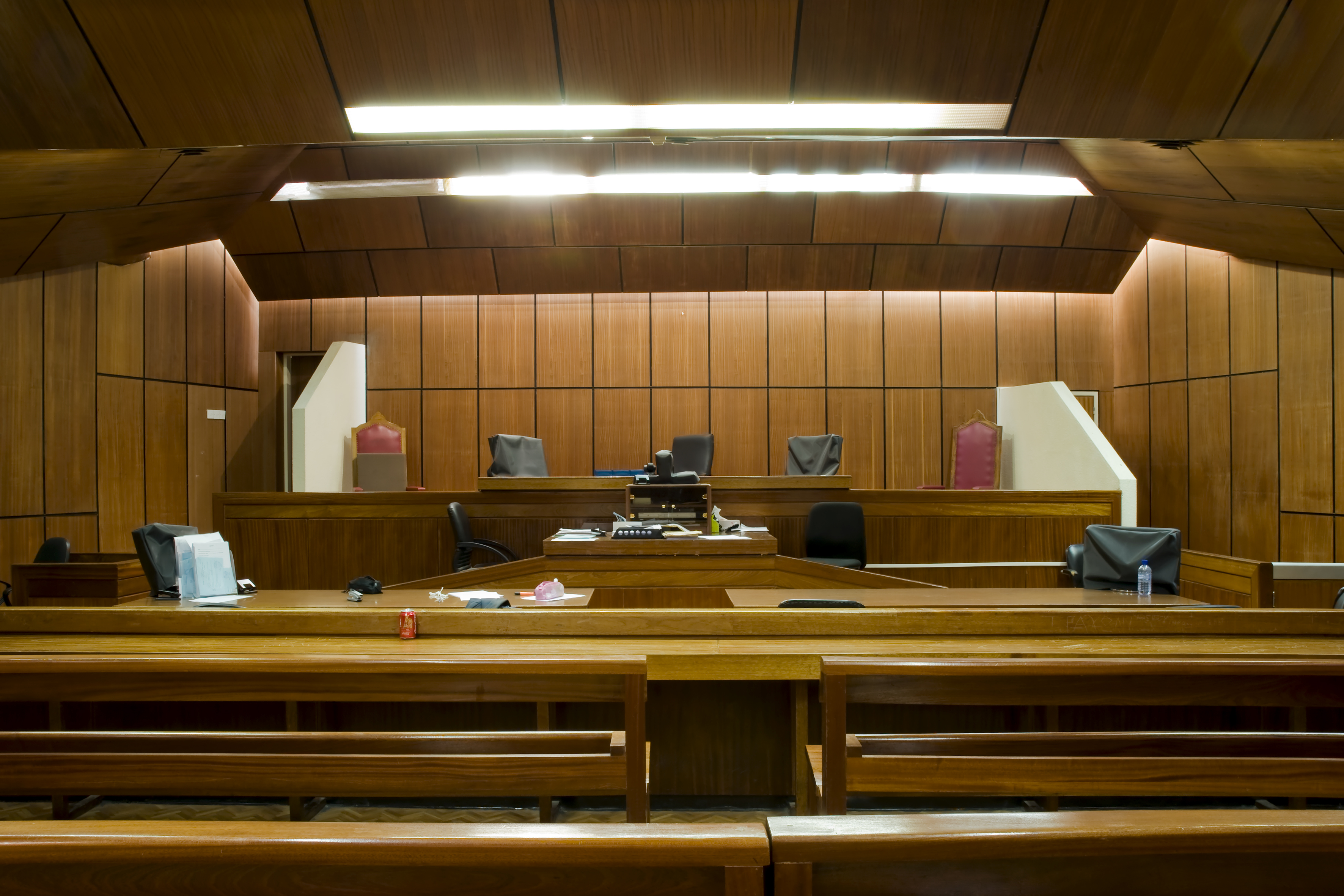
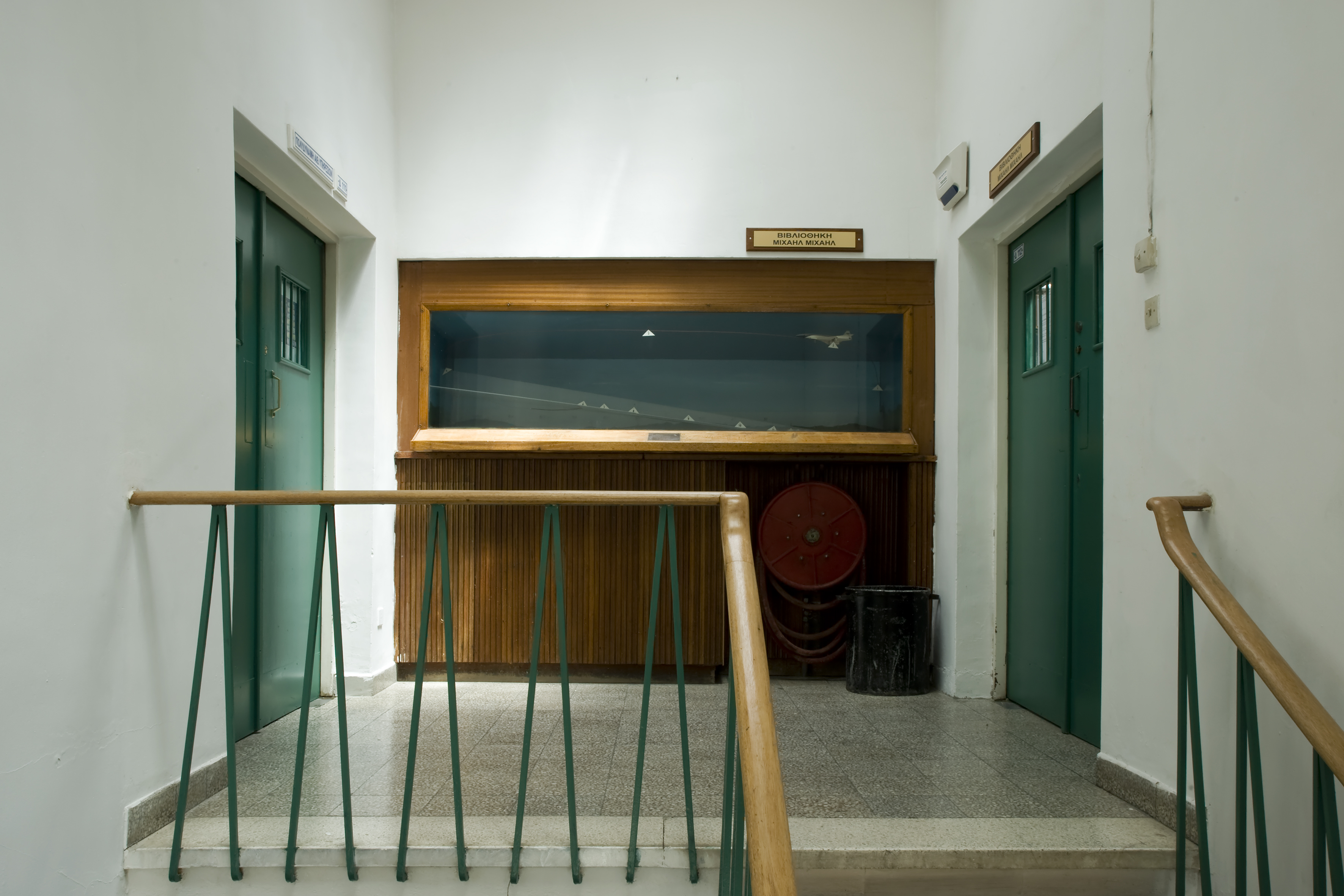


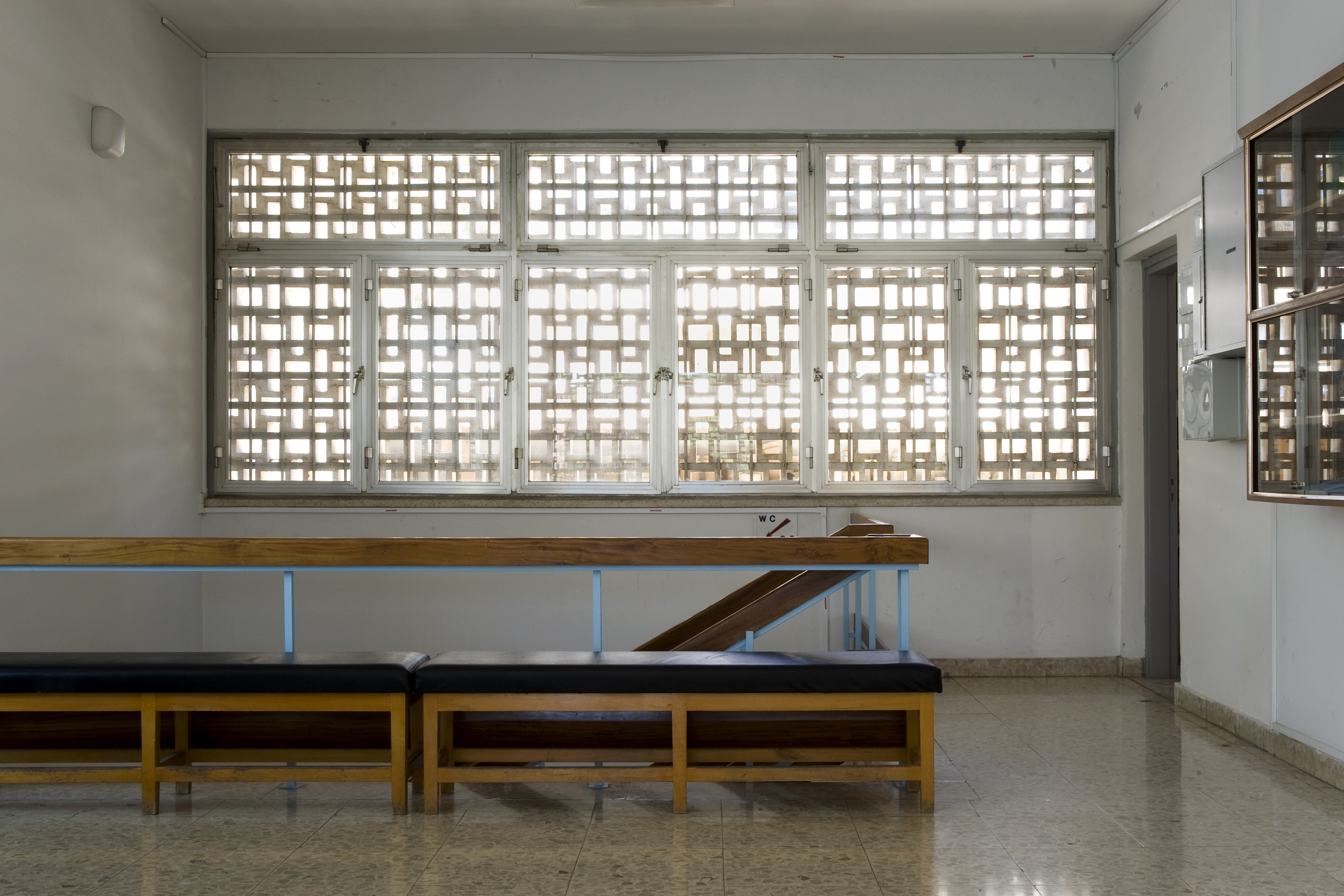

Institutionalized, 2013
digital c- prints, dimensions 90 x 130 cm
digital c- prints, dimensions 90 x 130 cm
The work Institutionalized,
assembles a photographic collection of selected public buildings which were
built and flourished during the 60’s and 70’s in Cyprus. Focusing on
formalistic clarity, simplicity, and visual expression of structure, a series
of Modernist administrative complexes emerged. These buildings, quite often
associated with governmental institutions, were established as centers of human
activity expressing and simultaneously shaping the social matrix in Cyprus.
Conducting a disengaged examination of these social spaces, devoid of any human
presence, the photographs investigate the psychology of social architecture.
The large-scale photographic prints record in a detached manner undefined paradigms of schools, theatres, museums, court houses etc., that were once vibrant points of reference in forming conditions, socialization, public awareness and perception. These architectural spaces, through a systematic documentation assume the archetypal image of the school, the courthouse, the lobby. The resulting photographs transcend a pictorial account of the buildings, they attempt to trace the collective and personal context related to these spaces. Triggering collective memory, the photographs create an archive; which references past experiences related to the proposed spaces.
Fifty years later these buildings stripped bare of their original greatness bear visible signs of wear. In some cases, additions and alterations witness the passing of time, the impact of their increasing overpopulation and excessive usage. Layers of paint, aesthetic interventions and even structural modifications are attempts to enhance the functional inadequacy of the buildings to a contemporary standard. These interventions become markings of history, memory, use and decay while at the same time they inevitably suggest human inhabitation; an inhabitation that has taken place across several generations.
The large-scale photographic prints record in a detached manner undefined paradigms of schools, theatres, museums, court houses etc., that were once vibrant points of reference in forming conditions, socialization, public awareness and perception. These architectural spaces, through a systematic documentation assume the archetypal image of the school, the courthouse, the lobby. The resulting photographs transcend a pictorial account of the buildings, they attempt to trace the collective and personal context related to these spaces. Triggering collective memory, the photographs create an archive; which references past experiences related to the proposed spaces.
Fifty years later these buildings stripped bare of their original greatness bear visible signs of wear. In some cases, additions and alterations witness the passing of time, the impact of their increasing overpopulation and excessive usage. Layers of paint, aesthetic interventions and even structural modifications are attempts to enhance the functional inadequacy of the buildings to a contemporary standard. These interventions become markings of history, memory, use and decay while at the same time they inevitably suggest human inhabitation; an inhabitation that has taken place across several generations.
The buildings, still in use today, are being inhabited
daily by a wide range of employees and visitors. Paradoxically the photographs
capture these institutions in the absence of any human presence or function. Despite
the apparent tranquillity and vacancy in which the buildings are immersed in, they
exude an eerie sense of movement and inhabitation. Marked with human activity
-that can be cognitively reconstructed- the photographs deny from the viewer the
active inhabitants of these buildings. Instead they point towards an
examination of the personal and collective association to the spaces.
The structures themselves suggest a notion of expectation and anticipation. These spaces are intermediate hubs, temporary occupied while waiting for someone of something. This duality of human absence and presence, of stagnation and movement can allude to an impossible fleeting moment of time where something seems likely to happen any minute, yet the photographic compositions reveal minimum information; enough to arouse a discomforting curiosity.
The structures themselves suggest a notion of expectation and anticipation. These spaces are intermediate hubs, temporary occupied while waiting for someone of something. This duality of human absence and presence, of stagnation and movement can allude to an impossible fleeting moment of time where something seems likely to happen any minute, yet the photographic compositions reveal minimum information; enough to arouse a discomforting curiosity.